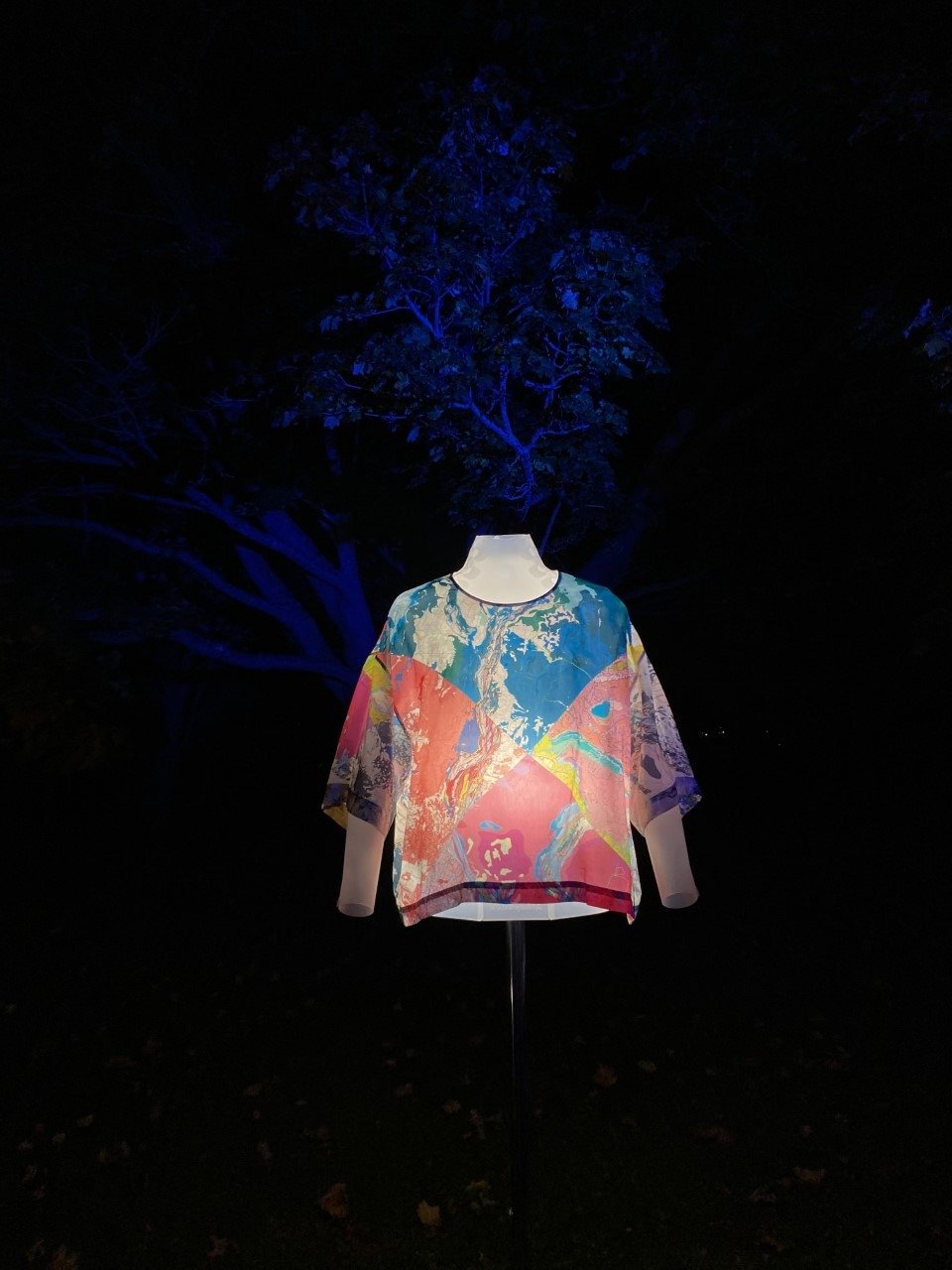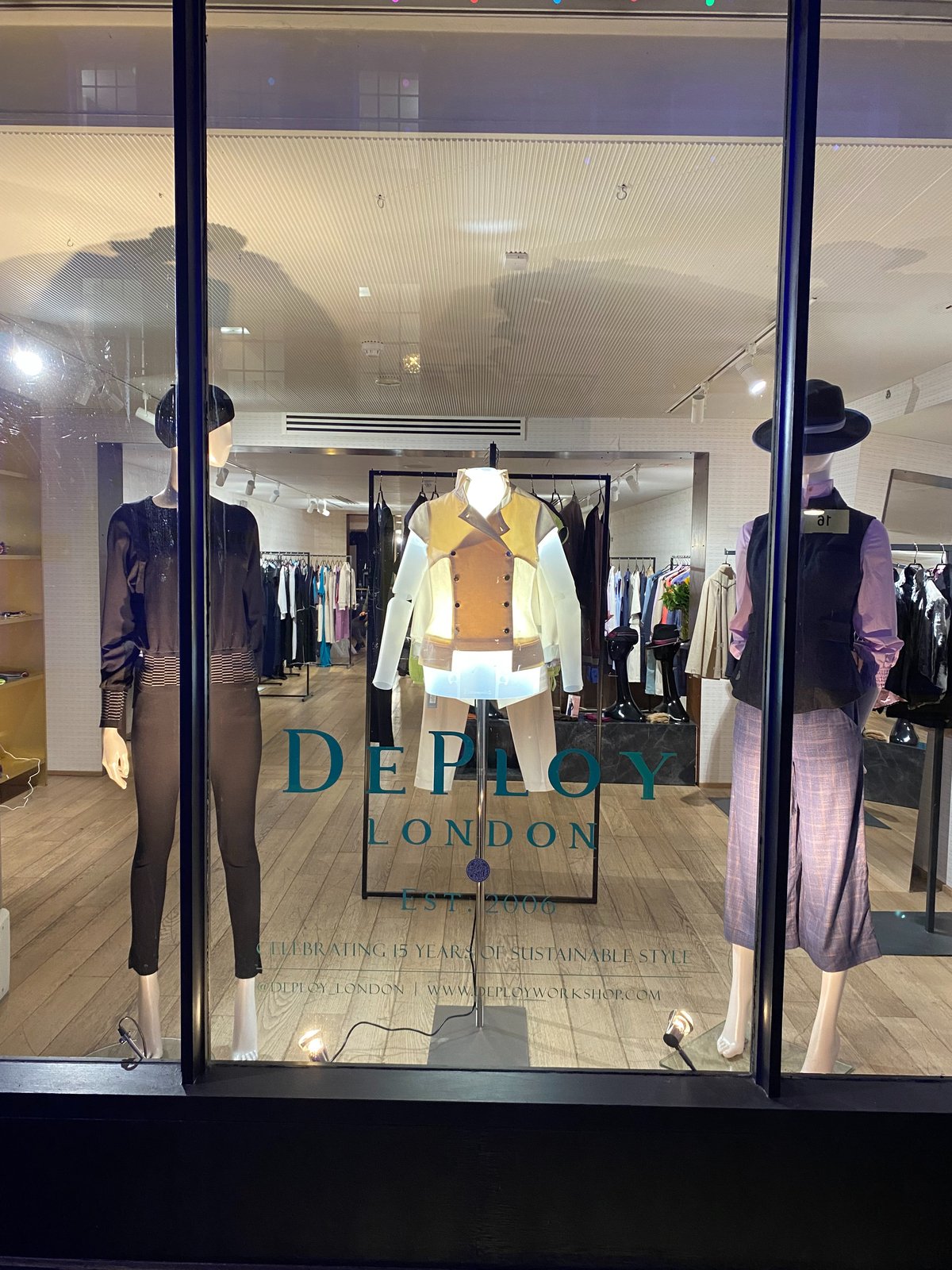Spotlight on: Mannequino
Mannequino, the joint effort of Royal College of Art alumni Kelly Sant and Arash Kaynama, has had a busy 18 months. When we last left the flat-packed mannequin company in mid-2020, it had just been selected by Global Fashion Agenda for the Copenhagen Fashion Summit of that year, and was set to appear at Amsterdam’s Fashion for Good Museum. Today, Mannequino continues to be used by European and British fashion museums, as well as by the Canadian National Gallery, where it is helping to exhibit an installation by artist and activist Alexa Hatanaka.
Meanwhile, in retail, Mannequino is found in high street windows across the globe, from London to Los Angeles, and, despite the logistical challenges of the past year, continues working with long-term collaborators including Christopher Raeburn, Berghaus, Cordura, Rab, Deploy Workshop, Smart Wool, Ka De Will and Gill, as well as new partners like Pyjama Pantry, trialling with these clients some edits and extensions to the platform.
Mannequino has also begun production of a founder’s film alongside filmmaker Pete Wales from Sieve Studio, working in various locations in Cambridge and London. Some of the promotional images from which can be seen below - we look forward to seeing the finished article.
What is Mannequino?
As the world’s first circular mannequin design, the demand for Mannequino since its inception in 2014 has been consistently high. Extracting mannequin design from a traditionally customised, unrecyclable, toxic, labour and material intensive industry, Mannequino is a smart, agile, modular, and resource-efficient fashion platform. Its patented design is comprised of flat-packed 2D panels which fit via a snap-lock system into a 3D form. The build mechanism is very intuitive and requires no tools, meaning the Mannequino can be quickly assembled and deconstructed with little training required, and courtesy of their flat-pack shape, Mannequinos are more affordable to ship than conventional mannequins, costing around a fraction of the price to courier.
Available in various frame configurations and pairings, Mannequino can be freestanding or hung, re-arranged easily and quickly, and lit up internally. Made from polypropylene, which is a non-toxic, long-chain thermoplastic, the material has a wide range of applications and a global network for recycling. Additionally, using less than 80-98% material of conventional mannequin designs, none of Mannequino’s parts, including any metal components, are printed, glued, laminated, painted or lacquered, which means the plastic and other component raw materials can be easily returned back into their high-value natural state and reused as if from new. This is part of Mannequino’s contribution to the circular economy, to eliminate harmful waste and operate within a closed loop of resources. Reducing its carbon footprint wherever possible, Mannequino wants to instil this commitment throughout the fashion industry.
Mannequino’s high-speed factory is located at our site in South Cambridgeshire, with 80% of Mannequinos being exported from ARCC Innovations. You can find out more about Mannequino’s unique approach to fashion on its website and be sure to keep an eye out for its upcoming film.



